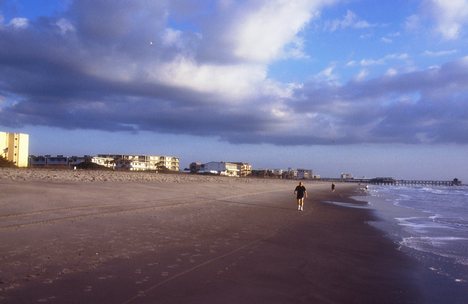
- Order:
- Duration: 10:14
- Published: 05 Aug 2010
- Uploaded: 03 Aug 2011
- Author: Secondisasters
- http://wn.com/Seconds_from_disaster__Munich_Olympic_Massacre__Part_1
- Email this video
- Sms this video

































































































Initially, most of its members were dissidents within Fatah who had been close to Abu Ali Iyad, the commander of Fatah forces in northern Jordan who continued to fight the Jordanian Army until he was killed by them on July 23, 1971. It was alleged by them that Jordanian prime minister at the time, Wasfi al-Tal, was personally responsible for his torture and death.
In his book Stateless, Salah Khalaf (Abu Iyad), Arafat's chief of security and a founding member of Fatah, wrote that: "Black September was not a terrorist organization, but was rather an auxiliary unit of the resistance movement, at a time when the latter was unable to fully realize its military and political potential. The members of the organization always denied any ties between their organization and Fatah or the PLO."
Abu Iyad's claim was contradicted by Mohammed Daoud Oudeh, also known as Abu Daoud, a BSO operative and former senior PLO member, who, according to a 1972 article in the Jordanian newspaper Al-Dustur, told Jordanian police: "There is no such organization as Black September. Fatah announces its own operations under this name so that Fatah will not appear as the direct executor of the operation." A March 1973 document released in 1981 by the U.S. State Department seemed to confirm that Fatah was Black September's parent organization.
According to American journalist Charlie Cranston John K. Cooley, the BSO represented a "total break with the old operational and organizational methods of the fedayeen. Its members operated in air-tight cells of four or more men and women. Each cell's members were kept purposely ignorant of other cells. Leadership was exercised from outside by intermediaries and 'cut-offs' [sic]", though there was no centralized leadership (Cooley 1973).
Cooley writes that many of the cells in Europe and around the world were made up of Palestinians and other Arabs who had lived in their countries of residence as students, teachers, businessmen, and diplomats for many years. Operating without a central leadership (see Leaderless resistance), it was a "true collegial direction" (ibid). The cell structure and the need-to-know operational philosophy protected the operatives by ensuring that the apprehension or surveillance of one cell would not affect the others. The structure offered plausible deniability to the Fatah leadership, which was careful to distance itself from Black September operations.
Fatah needed Black September, according to Benny Morris, who was at the time a professor of history at Ben-Gurion University. He writes that there was a "problem of internal PLO or Fatah cohesion, with extremists constantly demanding greater militancy. The moderates apparently acquiesced in the creation of Black September in order to survive" (Morris 2001, p. 379). As a result of pressure from militants, writes Morris, a Fatah congress in Damascus in August–September 1971 agreed to establish Black September. The new organization was based on Fatah's existing special intelligence and security apparatus, and on the PLO offices and representatives in various European capitals, and from very early on, there was cooperation between Black September and the PFLP (ibid.)
The PLO closed Black September down on September 1973, on the anniversary it was created by the "political calculation that no more good would come of terrorism abroad" according to Morris (ibid. p. 383). In 1974 Arafat ordered the PLO to withdraw from acts of violence outside the West Bank, the Gaza Strip and Israel.
Following the attack, the Israeli government, headed by Prime Minister Golda Meir, ordered Mossad to assassinate those known to have been involved. What was then known as Operation Bayonet had begun. By 1979, during what became known as Operation Wrath of God, at least one Mossad unit had assassinated eight PLO members. Among them was the leading figure of Ali Hassan Salameh, nicknamed the "Red Prince," the wealthy, flamboyant son of an upper-class family, and commander of Force 17, Yasser Arafat's personal security squad. Salameh was behind the 1972 hijacking of Sabena Flight 572 from Vienna to Lod. He was killed by a car bomb in Beirut on 22 January 1979. In Operation Spring of Youth, in April 1973, Israeli commandos killed three senior members of Black September in Beirut. In July 1973, in what became known as the Lillehammer affair, six Israeli operatives were arrested for the murder of Ahmed Bouchiki, an innocent Moroccan waiter who was mistaken for Ali Hassan Salameh.
Recent remarks by Abu Daoud, the alleged mastermind of the Munich kidnappings, deny that any of the Palestinians assassinated by Mossad had any relation to the Munich operation, this despite the fact that the list includes 2 of the 3 surviving members of the kidnap squad arrested at the airport. Many Palestinians however deny the contents of the revelations included in that book.
Other actions attributed to Black September include:
Eight bombs were addressed to embassy staffers. Four were intercepted at a post office sorting room in Earls Court, but the other four letters made it to the embassy. Three of the letters were detected in the consulate post room
In Shachori's memory an annual memorial lecture on agriculture in London was established.
This text is licensed under the Creative Commons CC-BY-SA License. This text was originally published on Wikipedia and was developed by the Wikipedia community.
